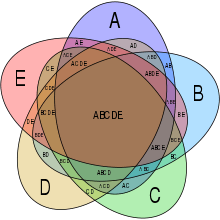Branko Grünbaum
| Branko Grünbaum | |
|---|---|
 Branko Grünbaum in 1975 | |
| Born |
2 October 1929 Osijek, Kingdom of Yugoslavia, (now Croatia) |
| Died |
14 September 2018 (aged 88) Seattle, Washington, U.S. |
| Nationality | Yugoslav American |
| Alma mater | Hebrew University of Jerusalem |
| Awards |
Lester R. Ford Award (1976) Carl B. Allendoerfer Award (1978) Leroy P. Steele Prize (2005) |
| Scientific career | |
| Fields | Mathematics |
| Institutions | University of Washington |
| Thesis | On Some Properties of Minkowski Spaces (1957) |
| Doctoral advisor | Aryeh Dvoretzky |
| Doctoral students |
Joram Lindenstrauss Micha Perles |
Branko Grünbaum (Hebrew: ברנקו גרונבאום; 2 October 1929 – 14 September 2018)[1] was a Yugoslavian-born mathematician of Jewish descent[2] and a professor emeritus at the University of Washington in Seattle. He received his Ph.D. in 1957 from Hebrew University of Jerusalem in Israel.[3] He authored over 200 papers, mostly in discrete geometry, an area in which he is known for various classification theorems. He wrote on the theory of abstract polyhedra.
His paper on line arrangements may have inspired a paper by N. G. de Bruijn on quasiperiodic tilings (the most famous example of which is the Penrose tiling of the plane). This paper is also cited by the authors of a monograph on hyperplane arrangements as having inspired their research.

Grünbaum also devised a multi-set generalisation of Venn diagrams. He was an editor and a frequent contributor to Geombinatorics.
Grünbaum's classic monograph Convex polytopes, first published in 1967, became the main textbook on the subject. His monograph Tilings and Patterns, coauthored with G. C. Shephard, helped to rejuvenate interest in this classic field, and has proved popular with nonmathematical audiences, as well as with mathematicians.
In 1976 Grünbaum won a Lester R. Ford Award for his expository article Venn diagrams and independent families of sets.[4] In 2004, Gil Kalai and Victor Klee edited a special issue of Discrete and Computational Geometry in his honor, the "Grünbaum Festschrift". In 2005, Grünbaum was awarded the Leroy P. Steele Prize for Mathematical Exposition from the American Mathematical Society. He was a Guggenheim Fellow, a Fellow of the AAAS and in 2012 he became a fellow of the American Mathematical Society.[5][6] Grünbaum supervised 19 Ph.D.s and currently has at least 200 mathematical "descendants".[3]
Selected publications
- Grünbaum, Branko (2003), Kaibel, Volker; Klee, Victor; Ziegler, Günter M., eds., Convex Polytopes, Graduate Texts in Mathematics, 221 (2nd ed.), Springer-Verlag, ISBN 0-387-00424-6 .
- Grünbaum, Branko; Shephard, G. C. (1987), Tilings and Patterns, New York: W. H. Freeman, ISBN 0-7167-1193-1 [7].
See also
Notes
- ↑ Choi, Rose (September 18, 2018). "Branko Grünbaum (1929—2018)". University of Washington Mathematics Department.
- ↑ Branko Grünbaum, Hrvatska enciklopedija LZMK.
- 1 2 Branko Grünbaum at the Mathematics Genealogy Project
- ↑ Grünbaum, Branko (1975). "Venn diagrams and independent families of sets". Mathematics Magazine. 48: 12–23. doi:10.2307/2689288.
- ↑ List of Fellows of the American Mathematical Society, retrieved 2013-01-19.
- ↑ M. Pircea. The Best Writing on Mathematics 2010. Princeton University Press. ISBN 9780691148410.
- ↑ This book is reviewed by L. Fejes Toth in BULLETIN (New Series) OF THE AMERICAN MATHEMATICAL SOCIETY Volume 17, Number 2, October 1987, pages 369-372 read at https://projecteuclid.org/download/pdf_1/euclid.bams/1183554198
References
- Orlik, Peter; Terao, Hiroaki (1992), Arrangements of hyperplanes, New York: Springer, ISBN 3-540-55259-6